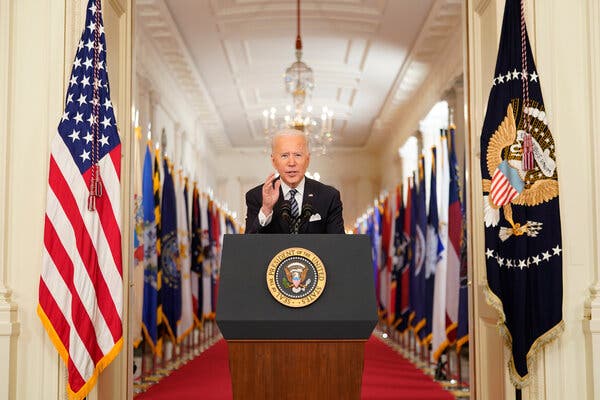
Stimulus payments have started to land in Americans’ bank accounts, just days after President Biden signed a $1.9 trillion pandemic rescue bill into law.
The Internal Revenue Service announced on Friday that people would start receiving direct deposits over the weekend as the Biden administration rushes to get money to people who have been struggling throughout the pandemic. More batches will be sent out in the next few weeks, with some payments arriving by mail as checks or debit cards.
Johanna Suarez, a 21-year-old sophomore at Houston Community College, said she received her $1,400 payment on Saturday morning. She plans to use some of the money to buy books for school and pay for a dental procedure to remove her wisdom teeth.
Ms. Suarez said she needed the payment because her insurance does not cover dental costs. As an adult dependent, she qualified for the stimulus payment for the first time. (The previous two rounds of stimulus payments required dependents to be younger than 17 to be eligible, leaving out many college students.)
“The stimulus check was a little bit of a saving grace,” Ms. Suarez said.
Mr. Biden signed the pandemic relief bill, which prompted the payments, on Thursday afternoon. The payments provide up to $1,400 per individual, including dependents. The amounts are reduced for individuals making more than $75,000 and for married couples who earn more than $150,000. People earning more than $80,000 or couples making more than $160,000 are not eligible for payments.
David Gordon, 40, said he saw a post on Twitter about the stimulus payments and checked his bank account at about 8:30 a.m. on Saturday to find a $1,400 deposit in the account that he shares with his wife.
Mr. Gordon, an assistant attorney general for the state of Texas, used some of his payment to donate $400 to a charity organization that supports cyclists. He also spent about $250 on plants at a garden nursery after a recent winter storm destroyed the ones in his yard.
Although he said he was not an ardent supporter of Mr. Biden and his centrist positions, he said the payments were a “good thing for the country.”
Lilliana Cardiel, a 48-year-old supply chain manager at the University Medical Center of El Paso, said she received her payment at about 1 a.m. early Saturday. She was surprised to get her payment so early, after the last two rounds of stimulus checks took more than a week to arrive.
She put the $4,200 — which she received for her daughter, grandmother and herself — toward her savings account for emergencies. “I’ve been saving all of my stimulus checks,” Ms. Cardiel said. “It’s money I can count on.”
Recipients can check the status of their payments on the I.R.S. website starting Monday.
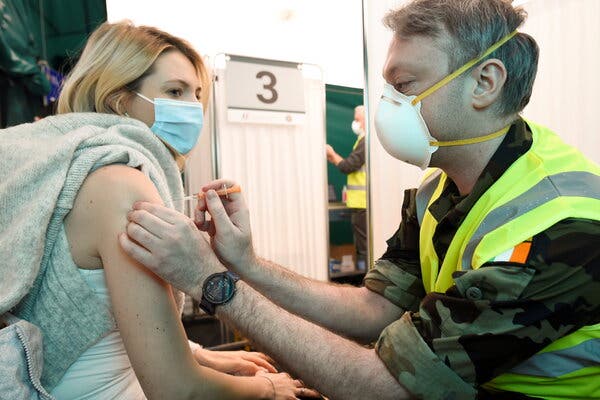
Ireland suspended use of the Covid-19 vaccine by Oxford-AstraZeneca on Sunday, citing reports of unusual blood clotting problems among people who recently received shots in Norway.
The decision followed a new advisory from Norway on Saturday that four people given the AstraZeneca vaccine had experienced blood clotting issues and all had low platelet counts. Major public health agencies, including the World Health Organization, point out that millions of people have received the vaccine without experiencing such blood clotting issues, and that experts have not found a causative link between any of the vaccines and the conditions.
Ireland’s health minister, Stephen Donnelly, said:
The decision to temporarily suspend use of the AstraZeneca Covid-19 vaccine was based on new information from Norway that emerged late last night. This is a precautionary step. The National Immunisation Advisory Comm meets again this morning and we’ll provide an update after that
— Stephen Donnelly (@DonnellyStephen) March 14, 2021
Regulators like the European Medicines Agency are investigating to determine whether there is evidence of any link.
Professor Karina Butler, the chairwoman of Ireland’s immunization advisory committee, said the panel’s recommendation was made while agencies were investigating. “We will continue to monitor the situation, and if we can be satisfied that these events are coincidental and not caused by this vaccine, we will reassess the situation.”
No such cases have been reported to Ireland’s medicine regulators, with over 117,000 doses of the vaccine administered in the country. Of the newest reports in Norway, one patient died from an unexpected brain hemorrhage and the three others with severe cases of blood clots or brain hemorrhages were being treated in a hospital, according to the Norwegian Medicines Agency.
That agency issued an advisory for people under age 50 who had received the AstraZeneca vaccine in the past two weeks, and who feel increasingly unwell with several large blue patches on their skin more than three days after vaccination, to consult doctors or other medical advice as soon as possible.
Ireland joined other European countries in halting the use of the AstraZeneca vaccine in the past week as a precaution because of concerns over the risk of blood clots, though officials there emphasized that there was no evidence yet of a causal link and that the new reports from Norway were still being investigated. Thailand delayed its rollout of the vaccine, which was to begin Friday. The Democratic Republic of Congo has also delayed its rollout, Reuters reported. On Sunday, Italy’s northern region of Piedmont said it would temporarily suspend giving the AstraZeneca vaccine, a day after a teacher there died after receiving the shot.
The European Medicines Agency, which is investigating the relationship, said on Wednesday that 30 cases of obstructive blood clots had been reported in the nearly five million people who received the shot — a rate no higher than that seen in the general population, and that the vaccine’s benefits outweighed the risks. AstraZeneca has said that its safety data of more than 10 million records does not show evidence of an increased risk of pulmonary embolism or deep vein thrombosis.
Various health experts and the U.S. Centers for Disease Control and Prevention have been investigating whether there is a link between a rare platelet disorder that has emerged in a few recipients of other vaccines in the United States. A Florida doctor died of the disorder after getting vaccinated this year.
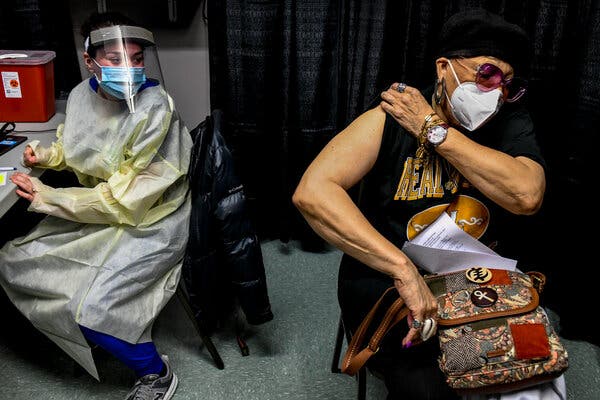
Thousands of clergy members from a cross-section of faiths — imams, rabbis, priests, swamis — are trying to coax hesitant Americans to get vaccinated against Covid-19.
By weaving scripture with science, they are employing the singular trust vested in them by their congregations to dispel myths and disinformation about the vaccines. Many are even offering their sanctuaries as vaccination sites, to make the experience more accessible and reassuring.
Their mission is becoming increasingly vital. With the White House promising enough doses for every American adult by May, public health officials are shifting their attention to the substantial number of people who are still skeptical about the vaccines. Winning them over is imperative if the country is to achieve widespread immunity from the virus and a semblance of normalcy.
Some of the most potent reasons people cite in resisting vaccines are rooted in religious beliefs. But clergy members who believe in the importance of vaccines are uniquely positioned to counter those claims.
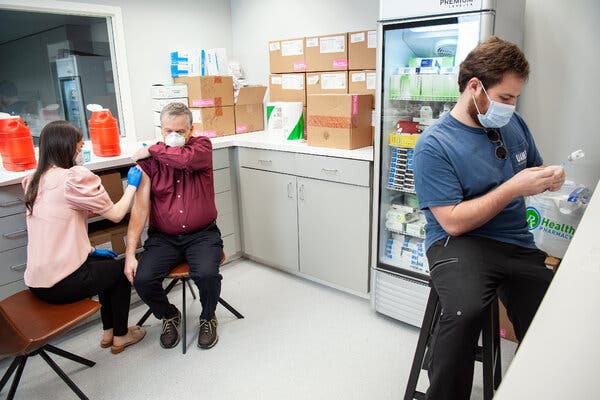
About 20 percent of the U.S. population has received at least one Covid-19 vaccine shot as the pace of inoculations in the United States sharply climbs. Here is a look at the vaccines that have been authorized by the Food and Drug Administration and where some other vaccine candidates stand.
How many vaccines are authorized in the U.S. now?
Three: from Pfizer-BioNTech, Moderna and Johnson & Johnson. Pfizer’s was the first, in December, with Moderna’s following shortly after; each is given in two shots spaced three to four weeks apart. Johnson & Johnson’s vaccine, authorized last month, is given in one dose.
Is the single-shot Johnson & Johnson vaccine widely available?
Not yet. When it was authorized on Feb. 27, Biden administration officials cautioned that supplies would be limited for the first month, with 3.9 million shots initially and 16 million more by the end of March.
Johnson & Johnson pledged last year to deliver 37 million doses by the end of March and a total of 100 million by the end of June, but it is still working on getting production up to that scale. A recent deal with Merck is meant to increase manufacturing and packaging capacity.
President Biden said last week that the federal government would order another 100 million doses of Johnson & Johnson’s shot.
Which vaccine could the F.D.A. authorize next?
Novavax could apply for emergency use authorization for its two-shot vaccine in late April. It offers robust protection, though it was not as effective against a variant circulating rapidly in South Africa as it was against other versions. Novavax could deliver 110 million doses by the end of June if the F.D.A. clears the vaccine for use.
AstraZeneca, whose vaccine is authorized in more than 70 countries, has not yet reported results from its U.S. clinical trial, nor has it applied for authorization in the U.S.
The AstraZeneca vaccine, developed with Oxford University, has run into some problems. European countries have suspended use of it over concerns about blood clots, although no evidence has been found of any causal link. Some people in Germany are also declining to receive it because of its lower overall efficacy in clinical trials, compared with other vaccines.
When will all Americans be able to get vaccinated?
Mr. Biden said he would direct all states to expand eligibility to include every adult — roughly 260 million people — by May 1. No vaccine is authorized yet for children.
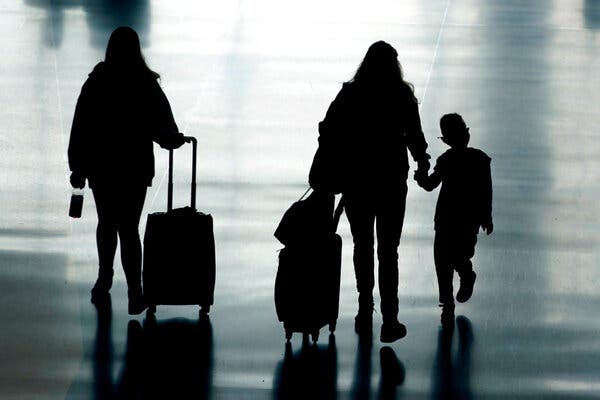
U.S. airports had 1.357 million people pass through on Friday, the highest number on any day since March 2020, just after the World Health Organization declared the coronavirus outbreak a pandemic.
The new figures from the Transportation Security Administration will be welcome news for the aviation industry, which has particularly been decimated during the pandemic but was granted some relief in the stimulus bill that President Biden signed on Thursday.
Still, nonessential flights go against the latest guidelines from the Centers for Disease Control and Prevention, which warned last week that even fully vaccinated people should avoid travel unless necessary.
“We know that after mass travel, after vacations, after holidays, we tend to see a surge in cases,” Dr. Rochelle Walensky, the director of the Centers for Disease Control and Prevention, said on Monday on MSNBC. “And so, we really want to make sure — again with just 10 percent of people vaccinated — that we are limiting travel.”
Plane travel remains relatively low in the United States — Friday’s figures are nearly 38 percent less than what they were on the same day in 2019, according to T.S.A. data — but the latest increase in airline passengers has come as states continue to expand vaccine eligibility criteria and during the peak of spring break season.
Photos of spring break partyers without masks in Florida spread on social media this week, prompting concern from some local officials. “Unfortunately, we’re getting too many people looking to get loose,” Mayor Dan Gelber of Miami Beach said. “Letting loose is precisely what we don’t want.”
The T.S.A. said it had prepared for a possible increase in spring break travel between late February and April, including through recruitment and vaccination efforts for its own officers. The agency’s employees had previously alleged that the more than 6,000 cases among their ranks were fueled by lax safety measures.
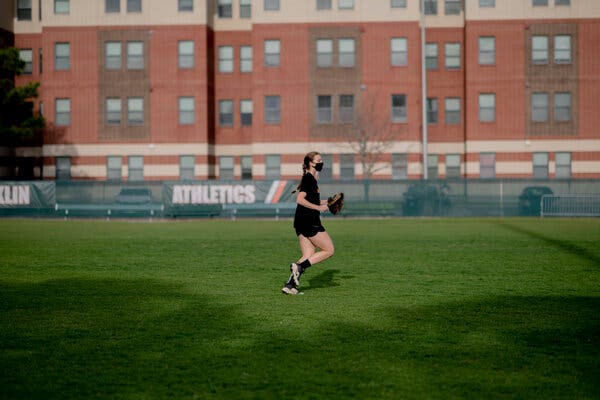
A year after the coronavirus crisis first closed athletic fields and darkened school gyms, students, parents, coaches and officials have struggled to navigate the challenges of youth sports, weighing concerns about transmitting the virus against the social, emotional and sometimes financial benefits of competition.
For months, a tangle of rules and restrictions that vary by state and sport has forced players and coaches to adapt. Vaccine rollouts and warmer spring temperatures have prompted some states to lift mask mandates and loosen safety guidelines, but health experts continue to urge caution for young athletes amid the spread of possibly more contagious variants of the virus.
Officials have linked virus outbreaks to ice rinks in Vermont, Florida and Connecticut, while a January report from the Centers for Disease Control and Prevention found that two high school wrestling tournaments in Florida led to nearly 80 people becoming infected with the virus, including one adult who died. In Minnesota, at least 68 cases since late January have been linked to participants in school-sponsored and club athletics, including hockey, wrestling and basketball, according to the state’s Health Department.
In at least some cases, the spread did not occur during competition, but at team-related gatherings. Recent data from the N.F.L. and the C.D.C. found that shared transportation and meals were the most common causes of the virus spreading among sports teams.
Many experts agree that youth sports are important for both physical and mental health. That has meant school athletics have continued in some places even when students are learning virtually.
“Sports for me is a huge mental thing,” said Audrey Mann, 17, a high school senior in New Orleans who is a captain of three varsity teams. “I need to exercise and get out. It’s the only way I’m social over this past year.”
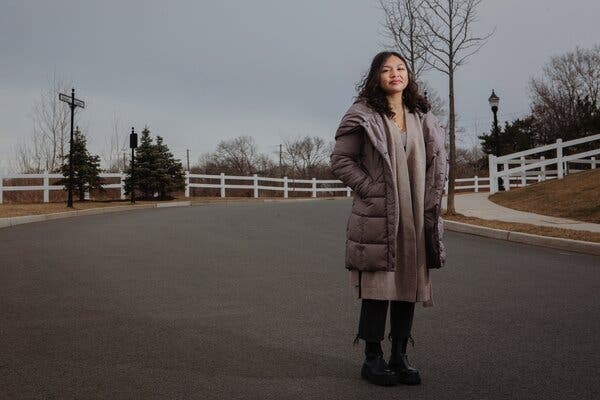
Gabrielle Dawn Luna sees her father in every patient she treats.
As an emergency room nurse in the same New Jersey hospital where her father lay dying of Covid-19 last March, Ms. Luna knows firsthand what it’s like for a family to hang on to every new piece of information. She’s become acutely aware of the need to take extra time in explaining developments to a patient’s relatives who are often desperate for updates.
And Ms. Luna has been willing to share her personal loss if it helps, as she did recently with a patient whose husband died. But she has also learned to withhold it to respect each person’s distinct grief, as she did when a colleague’s father also succumbed to the disease.
It’s challenging, she said, to allow herself to grieve enough to help patients without feeling overwhelmed herself.
“Sometimes I think that’s too big a responsibility,” she said. “But that’s the job that I signed up for, right?”
The Lunas are a nursing family. Her father, Tom Omaña Luna, was also an emergency nurse and was proud when Ms. Luna joined him in the field. When he died on April 9, Ms. Luna, who also had mild symptoms of Covid-19, took about a week off work. Her mother, a nurse at a long-term-care facility, spent about six weeks at home afterward.
“She didn’t want me to go back to work for fear that something would happen to me, too,” Ms. Luna said. “But I had to go back. They needed me.”
When her hospital in Teaneck, N.J., swelled with virus patients, she struggled with stress, burnout and a nagging fear that left her grief an open wound: “Did I give it to him? I don’t want to think about that, but it’s a possibility.”
Like the Lunas, many who have been treating the millions of coronavirus patients in the United States over the past year come from families defined by medicine. It is a calling passed through generations, one that binds spouses and connects siblings who are states apart.
It’s a bond that brings the succor of shared experience, but for many, the pandemic has also introduced a host of fears and stresses. Many have worried about the risks they’re taking and those their loved ones face every day, too. They worry about the unseen scars left behind.
transcript
0:00/1:30
–0:00
transcript
Yo-Yo Ma Plays Mini-Concert at Massachusetts Vaccination Site
The world-renowned cellist used the 15-minute observation period after receiving his second Covid-19 vaccine shot on Saturday to perform for others waiting at the Berkshire Community College site.
-
[cello music] [applause]
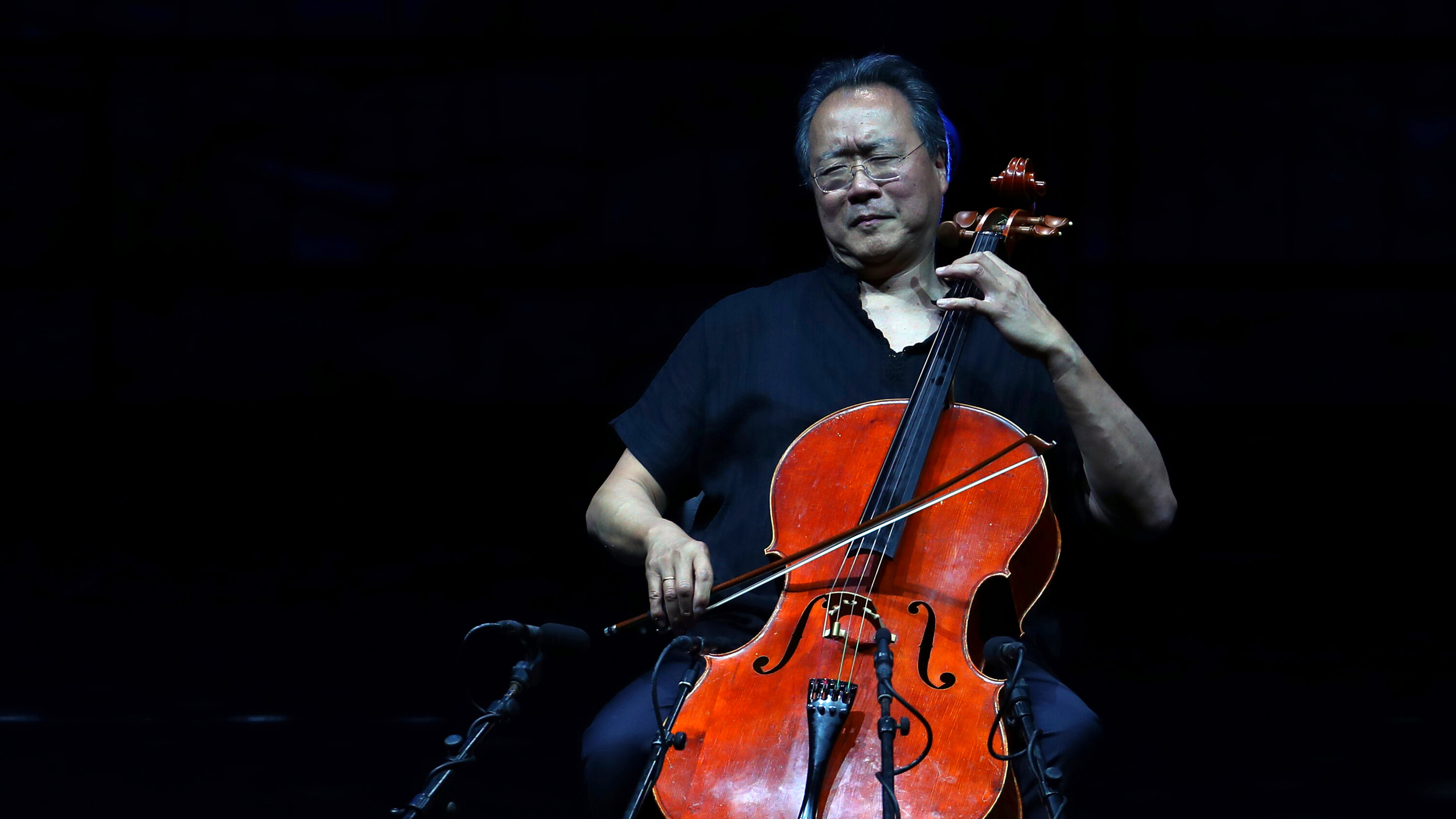
The world-renowned cellist Yo-Yo Ma gave a surprise concert on Saturday at a vaccination site in Massachusetts.
Mr. Ma, 65, who lives in the Berkshires part time, was spending 15 minutes in observation after receiving his second dose of a Covid-19 vaccine at Berkshire Community College in Pittsfield, Mass. He “wanted to give something back,” Richard Hall of the Berkshire Covid-19 Vaccine Collaborative told The Berkshire Eagle.
Clips shared on Facebook by the community college show the masked musician seated with his cello against a wall, away from other people under observation after being vaccinated. The songs included “Ave Maria” and Bach’s Prelude in G Major.
His post-vaccination performance came one year to the day after he first posted on Twitter about his project #SongsOfComfort, sharing a recording of himself playing Dvorak in an effort to reassure an anxious public as lockdowns began in the United States and elsewhere. Other musicians, both professional and amateur, soon joined in. In December, Ma and the British pianist Kathryn Stott released “Songs of Comfort and Hope,” an album that was inspired by the project.
Last year, Mr. Ma also gave a series of pop-up performances with the classical pianist Emanuel Ax for small groups of bus drivers, firefighters, health care providers and other essential workers in the Berkshires region.
“People need each other for support beyond the immediate staples of life,” Mr. Ma told The New York Times in November. “They need music.”
Read More…